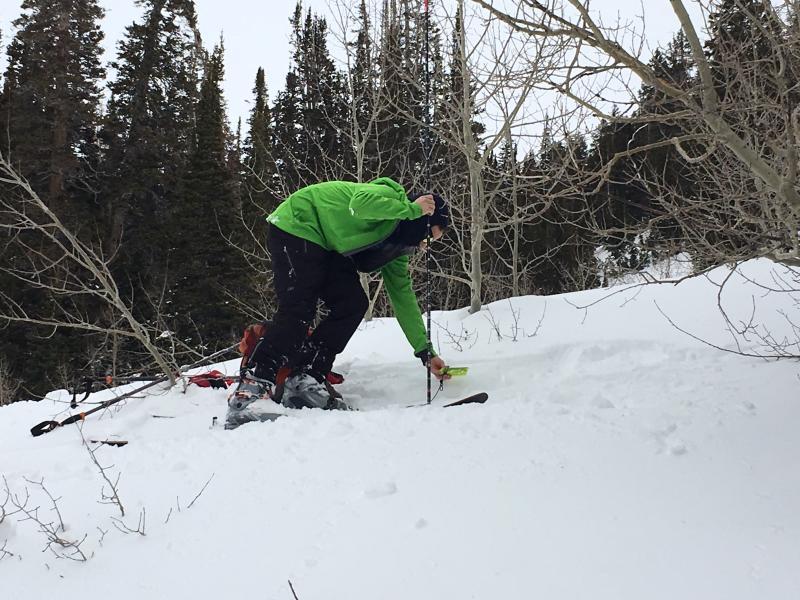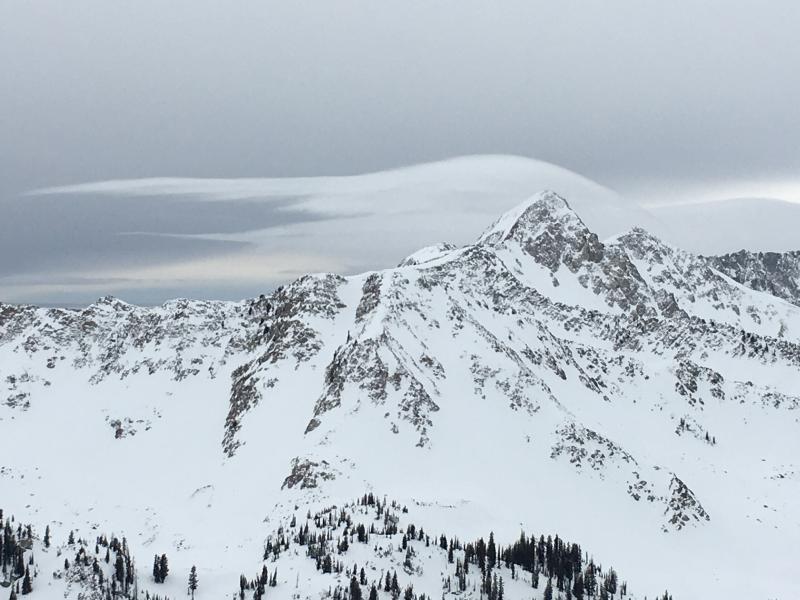My partner Wes Johnston and I visited the Birthday Chutes slide. I was up there on Tuesday, however Wes is gaining avalanche awareness skills and there is no better way to learn about avalanches than to visit the site of an avalanche. In addition to being in awe at the size of the crown, we also focused on thinner areas where the slide was likely triggered. We identified a few thinner areas where the crown is only 45-60 cms (18-24") with very weak faceted snow underneath, and it is likely the slide was triggered from one of these thinner areas.
Video below is of Wes looking at one of the thinner areas of the snowpack.
I've been asked by a few people over the past couple of weeks about the difference between a persistent slab and a deep slab, as these terms are often used interchangeably. What they have in common is a persistent weak layer such as faceted snow, surface hoar, or depth hoar. Once persistent weak layers form, they can take a notoriously long time to heal (weeks, months, all season long.) A persistent slab situation occurs when the persistent weak layer is in the upper meter (~3') of the snowpack. This could be something such as surface hoar or a layer of near-surface facets that develops at the surface of the snow, and is preserved and covered by storm snow or a wind slab. A deep slab situation is a type of persistent slab (hence why it is often called a persistent deep slab) where the persistent weak layer is greater than 1 meter, and typically near the ground. The usual culprit is depth hoar that is preserved from early season snowfall. Deep slab avalanches are very dangerous!
The photo below hopefully helps better explain.
The Birthday Chutes slide was a deep slab problem as the weak layer was faceted snow that was preserved from early November. Additional snow and wind-loading created a large, cohesive slab on top of the weak snow at the ground. Quite often, there can be many tracks on a slope that has a deep slab problem, however all it takes is one rider to hit a thinner area of the snowpack to trigger a large and destructive avalanche.
Our friends at the Colorado Avalanche Information Center (CAIC) have nice descriptions as well:

With less-than-ideal ski conditions, it's a great time to practice beacon skills and companion rescue.

Beautiful lenticular clouds over the Pfeifferhorn this afternoon. Hopefully this is a positive sign for a holiday weekend storm.







